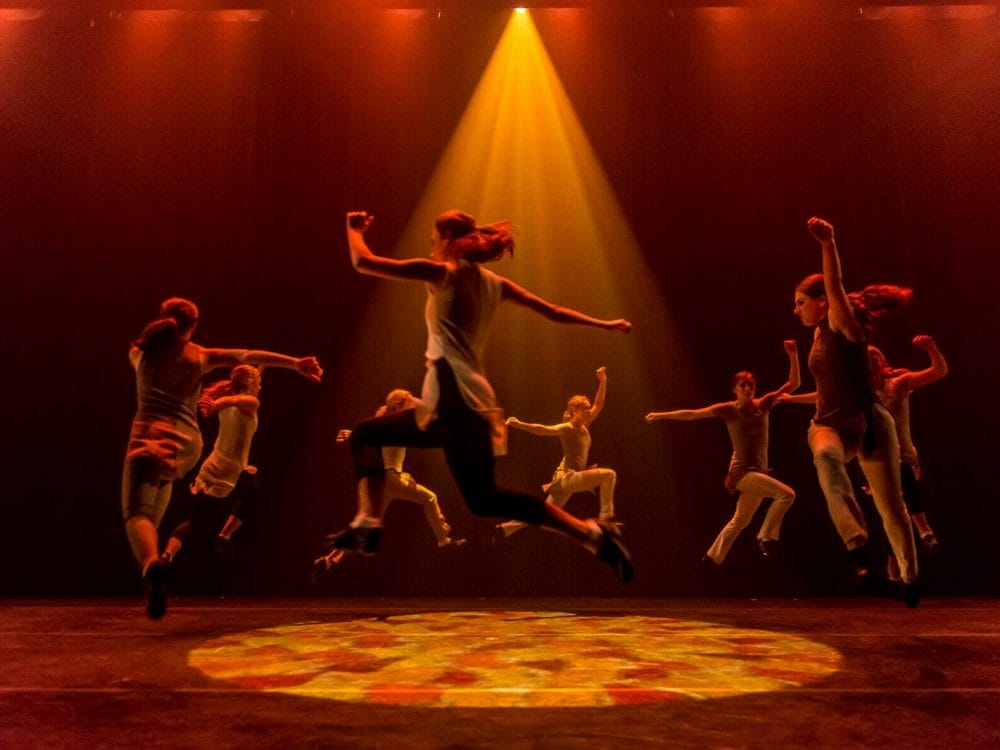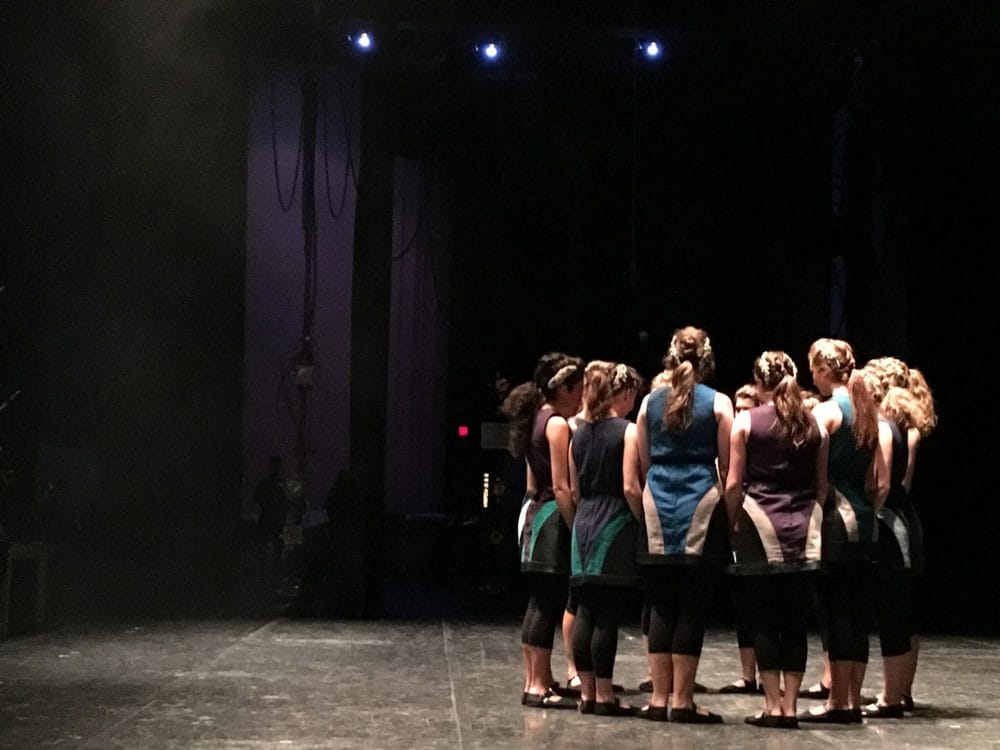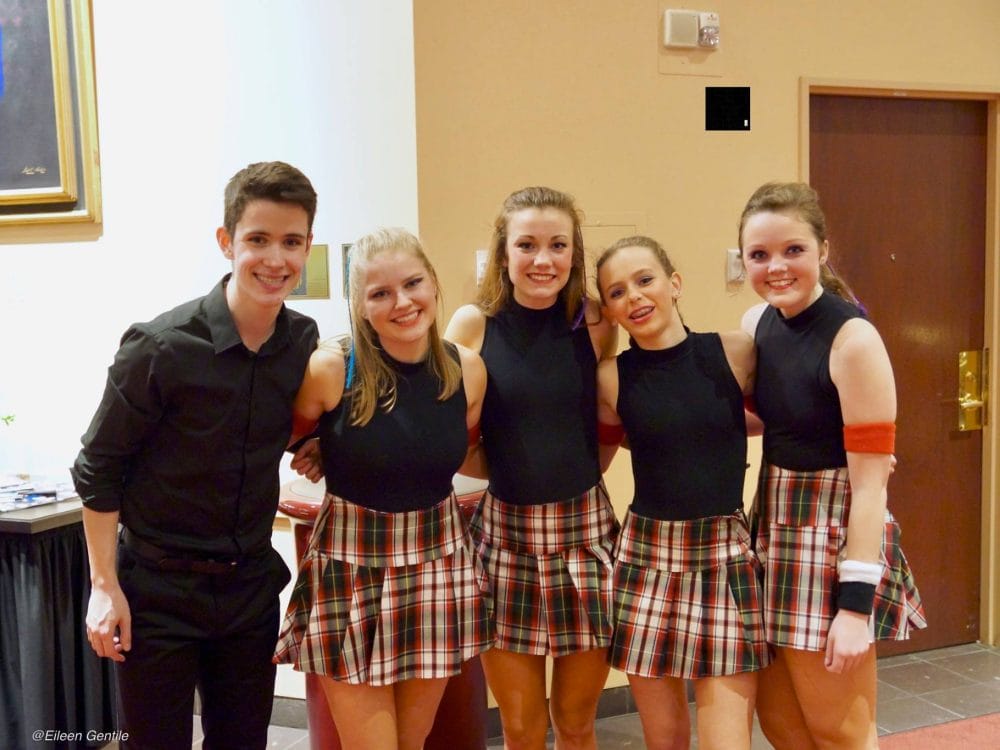Being Irish has always been a source of pride for Chicagoans. But putting aside the green river and shamrock-themed bar crawls that make their appearance in March every year, Chicago is a hub for traditional Irish dancing. However, there is one group in Chicago that is taking the very roots of Irish dancing and elevating it to a performance art. The Trinity Irish Dance Company makes Irish dance contemporary.
Perhaps you may have heard of the Trinity Academy of Irish Dance - well-known across the globe as being one of the top schools for Irish dance instruction. Spurring from this same tradition rooted in the Academy came TIDC. Even though the two are completely separate entities, they have a common through line - founder Mark Howard.
Award Winning Beginnings
Mark Howard was born in Yorkshire, England and came over to Chicago with his parents. He starting dancing at the Dennehy School of Irish Dance at the age of eight. He became a champion dancer and continued dancing competitively until seventeen.
From there, he started teaching and two years later founded the Trinity Academy of Irish Dance. After years of top-tier instruction, he went as a coach to the World Championships of Irish Dance in, where else, but Ireland. His students won silver medals for years until finally breaking the “emerald-barrier” and took home the gold.
Howard was always looking for ways to further the art of Irish dance, and so the beginnings of the Trinity Irish Dance Company took hold. For many dancers, turning eighteen meant the end of their dancing days. For some, when they head off to college, it marks the end of their Irish dancing because they don’t have the same availability to train and compete as they did before.
The Birth of the Company
Howard was realizing dancers had very limited options after the Academy. It was time to take Irish dance into the performance art space. In 1990, the Trinity Irish Dance Company was born. The Company became his focus for preserving the legacy of Irish dance while providing a creative, professional outlet for dancers at the peak of their ability. It was also the first of its kind to transition from competitive dancing to performance art.
Many of the original Company members came from the Academy as it was a natural transition for them. During its peak years, the Company received critical acclaim across the country. They were known for their innovative dance techniques influenced by a variety of other dance cultures while still maintaining their Irish roots.
Howard interviewed on television talk shows like Jay Leno, Conan O’Brien, The Today Show, and most well-known Johnny Carson. On that particular talk show, Howard was a regular guest and inspired one of the Company’s classic dance numbers, “Johnny.”
In addition to television specials, the Company was constantly busy with a packed tour schedule across the U.S. performing in venues like the Kennedy Center and New York’s Joyce Theater. They also toured parts of Europe and Japan to add to their impressive list of global destinations.
Check out the below video for snippets of their dazzling dance numbers!
Rise in Irish Dance Popularity
Four years after TIDC was born, another dance production developed - Riverdance. The lead male dancer, Michael Flatley, shares a similar beginning to Howard. He started at the same dance academy and created an Irish dance production. After Riverdance, Flatley created other large scale Irish dance productions, Lord of the Dance and Feet of Flames.
Many artists and journalists have weighed in on the influence of Trinity on Flatley’s popular productions and the conclusion is the same - without the influence of Trinity, there wouldn’t be these other shows. Journalists noted many similarities in dance numbers between the two companies, Riverdance’s “Distant Thunder” to Trinity’s “Celtic Thunder” for example. So while Riverdance became mainstream entertainment, Trinity was there first introducing it as an art form. As Riverdance benefitted from commercial success, it was still keeping the public’s eyes on Irish dance and in turn, Trinity as well.
A Brief Break and Recollection
Howard’s vision for the company was never to be a huge commercial production, drawing the line at using pyrotechnics and other flashy theatrical techniques. He always wanted to have the freedom to move, change, and develop versus other shows which have a tried and true performance routine. When you have a format that works like Riverdance, sometimes artistic vision and creativity is lost.
It’s a challenge that many artistic groups face - how big can you get without “selling out.” After about ten years, TIDC was facing this crossroad. The group took a step back to think about the future. Howard was still creating new dance routines, and the group still rehearsed and performed isolated dates in the 2000s. The Company just didn’t have as packed of a schedule as before.
Rebirth of the Company
In recent years, the group began gaining momentum again. Howard gathered a group of men and women from across the Midwest to create a renaissance for the Company. They’re working on a clear vision so TIDC will maintain its original roots while creating a sustainable non-profit company. Part of this re-birth includes using the talents of the current cast members as choreographers. One of the artistic associates and featured dancers, Chelsea Hoy, has been a major contributor to TIDC and recently sat down with me to discuss their current performance line up.
Chelsea has a long history with Irish dance as she competed for years in her home town, Denver. However, her end to competitive Irish dancing was much like others when they decided to go to college. Chelsea was looking at schools outside of Denver and thought she was going to be completely done with dancing. Fate seemed to have a different idea in mind.
She met Mark by chance at a competition in Chicago where she was there to watch friends compete. Her old dance instructor introduced her to Mark and said if he ever needed another talented stepper, Chelsea would be a perfect fit. Mark remarked that that wasn’t their focus and walked away. Perhaps that might have been the end of their relationship if Mark hadn’t come back and started talking about the Company.
From there, the rest is history. Mark called Chelsea a few weeks later, she auditioned, and was in. She is currently attending Loyola University in Chicago and studying psychology. Chelsea, along with the other members of the group, meet up at least once a month to rehearse and prepare for upcoming shows.
Over the St. Patrick’s Day weekend, TIDC was off to Nebraska for a one night only performance. At their final dress rehearsal, walking into the rehearsal space the energy is high as dancers run back and forth collecting costumes and other accessories. They then all gather in a circle, join hands to center their energy, and then are ready to begin.
Collaborating with Guest Choreographers
Their current routine includes dance numbers from guest choreographers. The Company’s mission is to stick to their traditional Irish roots while also exploring what other movements can work with these Irish steps. Take a look at their behind the scenes video below to see their guests working with the group:
The first number they perform is called “Communion” and evokes a sense of calm forcefulness to establish Trinity’s presence onstage. Speaking with Chelsea , she talks about working with guest choreographer, Sandy Silva, on this piece. Silva is known for her body percussion.
During their time together, Silva wore overalls with leather patches intended to make different sounds as she hit them. The costumes during this piece were inspired by these overalls. They have a leather-like material strategically placed for the dancers to hit and create the accompanying sound. They also perform in soft shoes and are bathed in cool blue and purple lights.
This piece is performed first in their set to tell the audience this performance you’re about to see is not traditional Irish dance. You can see the full piece performed in the accompanying video:
Another featured dance choreographed with Colin Dunn is called “Listen.” Dunn himself is an accomplished and award winning Irish dancer.
For this piece, the dancers are dressed in neutral colors and, according to Chelsea, brought them out of their comfort zone. It deconstructs Irish dance because it breaks down a usually rapid fire foot movement into basic steps.
Aptly titled, “Listen” has a call and response feeling as it has pauses between movements. A dancer will perform a few steps, pause for the same amount of beats, and it can be answered with a clapping response or more steps from another dancer.
Their final number called “Curran Event” was another collaborative piece choreographed with Seán Curran. It starts with a single dancer onstage, this time it was Maggie Nowakowski who let her personality shine in the beginning solo dance. This dance feels more light hearted than the rest of their numbers as the dancers join Maggie onstage and are all smiling and having fun with each other on stage. It has a hip-hop Irish dance feel that incorporates modern dance movements. The energy follows them all the way to the end of their set as they take their final bows after this piece.
Other Classic Dance Numbers
The rest of their set is a combination of classic Trinity pieces and new works choreographed by Mark, Chelsea, and other artistic associates. It feels like the energy of their footwork is being transferred from them to you as you feel each and every stomp through the floor.
During “Black Rose,” audience members will have goosebumps from the added drumming and the intensity coming from the dancers. They performed “Johnny” from the Johnny Carson show along with another dance called “Sevens.” Both of these are more traditional Irish dances and give you a taste of the Irish roots Trinity was built off of.
One of the other striking dances was “Soles,” which feels almost warrior-like as the dancers come on stage marching with heavy footsteps. Each dancer is bathed in a spotlight, dressed all in black with arm and leg bands. The start with slow, quiet steps that grow loud and forceful as the dancers look on with fierce intensity.
Their entire setlist is packed with high energy pieces and contrasting slower, more focused ones. Some are performed unaccompanied where all the sounds and rhythms you hear are from the dancers feet as they create the music to the dance. Others have music or the live band playing behind them and feature Celtic tunes. TIDC has a setlist where no two dances are the same. The choreography is stellar and makes the statement - Trinity is a dance force to be reckoned with and isn’t going anywhere anytime soon!
Looking to the Future
Luckily Mark Howard has never lost his passion for the art of Irish dancing. He continues to look for new ways to bring Irish dancing to life through TIDC. Their strength is their constant exploration and wanting to keep things fresh and innovative. There is no resting on their laurels as they push forward collaborating with talented choreographers and pushing the boundary of Irish dance.
They’ve recently launched an equality campaign called We for She at the end of 2016. The Company wanted to draw attention to the lack of equality seen in more commercialized shows. For some of these big shows, the main focus is on a scripted love story between a male and female lead dancer. These shows usually ends with the guy in the middle of a line flanked by women dancers. Trinity wants to put empower all its dancers and not focus on one gender over the other. They put this into practice by putting men and women dancers on equal footing.
They’ve incorporated this dynamic into their piece “Push,” where a male dancer starts out alone on stage. He is then joined by two women dancers and another guy. They all come together and perform the same steps in a circle. They interact and often call out words of encouragement to each other. With this campaign, Trinity hopes to draw the focus away from the objectification of women, and instead focus on their talents as Irish dance artists. You can check out a video of “Push” below!
Overall, seeing the Trinity Irish Dance Company is unlike any Irish dance you will have seen before. Like they’re tagline suggests, they are “everything you expect, but like nothing you can imagine.” They give you the traditional Irish dance, but elevate it to a completely different and unique experience. The sounds, movement, and energy they create while onstage is infectious and every single dance number is different than the last.
The Trinity Irish Dance Company recently appeared with the Chicago Human Rhythm Project’s Stomping Grounds Festival on April 8th. They will be featured again in June in the following performance:
When/Where
June 2, 2017 at 7:30pm (Festival Finale)
Studebaker Theater in the Fine Arts Building
410 S Michigan Ave, Chicago, IL 60605
Tickets
Tickets to this event can be reserved at the Chicago Human Rhythm Project website
More information about the company can be found on the Trinity Irish Dance Company website
Photos
Courtesy of the Trinity Irish Dance Company












